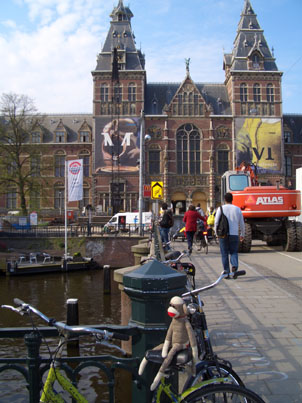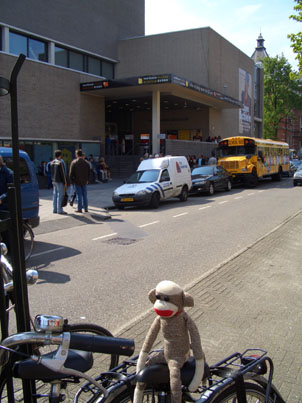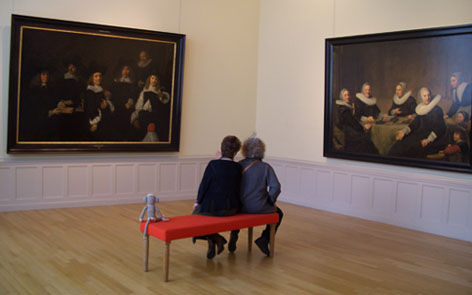|

|
Here, I secure my bicycle in front of the
Rijksmuseum, or State Museum, which is the national museum of the
Netherlands, located in Amsterdam. The Rijksmuseum, housed in its current
building (designed by Dutch architect Pierre Cuypers) since 1885, contains
many paintings from the Dutch Golden Age and a substantial collection of
Asian art. |
My mouth started to water as I pulled up to the
Restaurant Excelsior in Amsterdam. Chef Jean-Jacques Menanteau has never
disappointed me with his wonderful French cuisine. I looked forward to
dinner on the terrace overlooking the canal and, later, a retreat to my
room at the 19th century Hotel de l'Europe. |

|
|

|
My next stop was the Van Gogh Museum, also in
Amsterdam, which features the works of the Dutch painter Vincent van Gogh
and his contemporaries. On the eve of December 6, 2002, two of van Gogh’s
earliest works, "View of the Sea at Scheveningen" and "Congregation
Leaving the Reformed Church in Nuenen" were stolen from the museum. One
year later the international art thief "The Monkey" and his accomplice
were arrested for the crime. However, the paintings have never been
recovered, and under Dutch law, the thieves may assume legal title to the
paintings in 30 years time, provided they are able to prove that they
stole the paintings. I am currently working on several possible leads
regarding the paintings' whereabouts in order to foil this possible
plot. |
Next, I rode to Haarlem, located about 20 kilometers
from Amsterdam. Haarlem, which is over 750 years old and is known as the
City of Flowers, is one of Holland's most beauteous cities. The name
Haarlem comes from 'Haarlo-heim', which means village on higher
ground. |

|
|

|
Sitting here in the gothic St.
Bavo’s Church, or the Grote Kerk, in Haarlem I reflected upon the
melodious organ crafted by Christian Müller in 1735 and played by the
likes of Mozart and Handel while contemplating the graves paving the floor
such as that of the painter Frans
Hals. |


